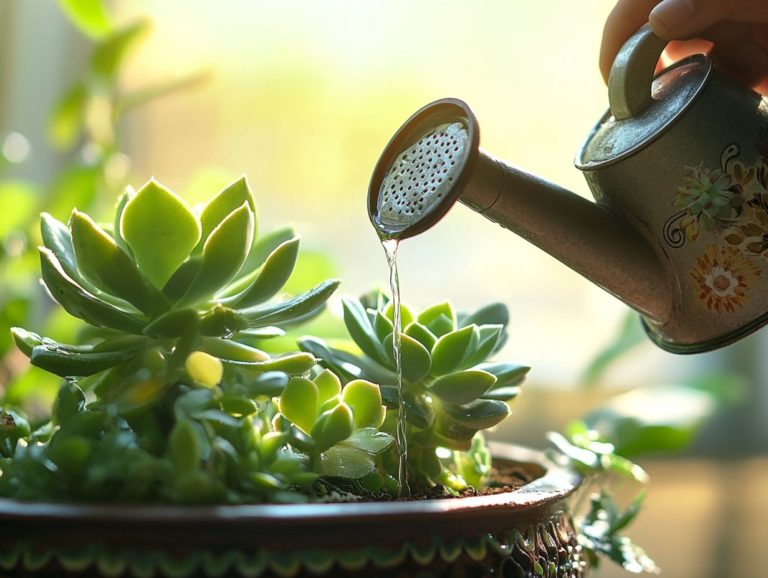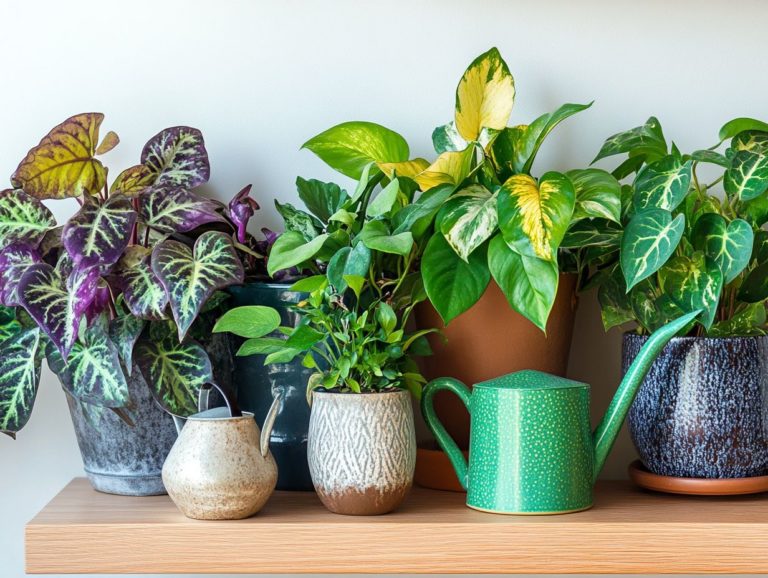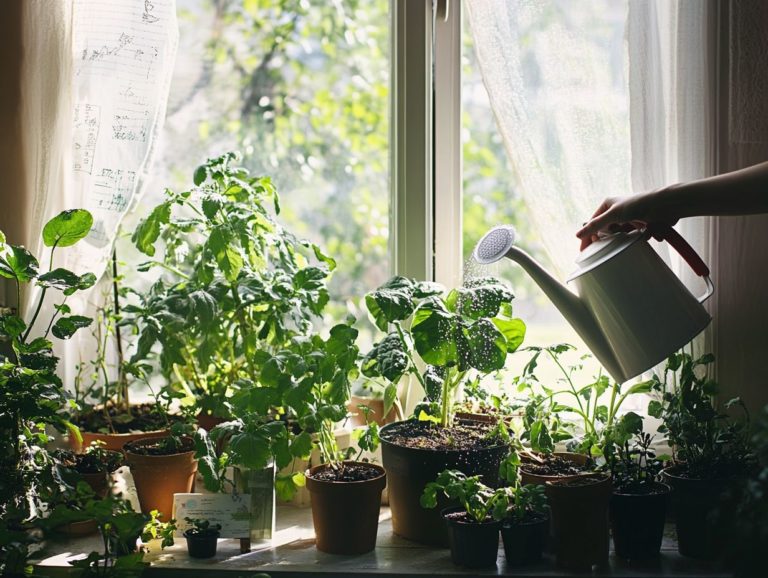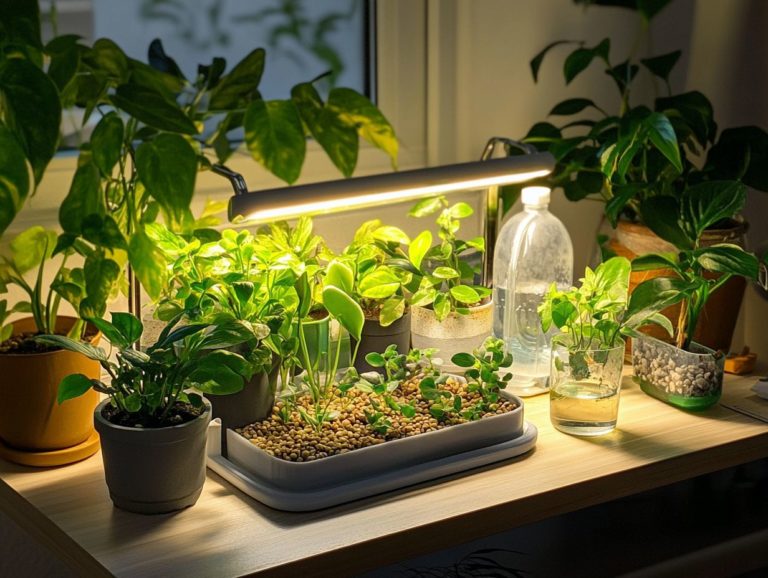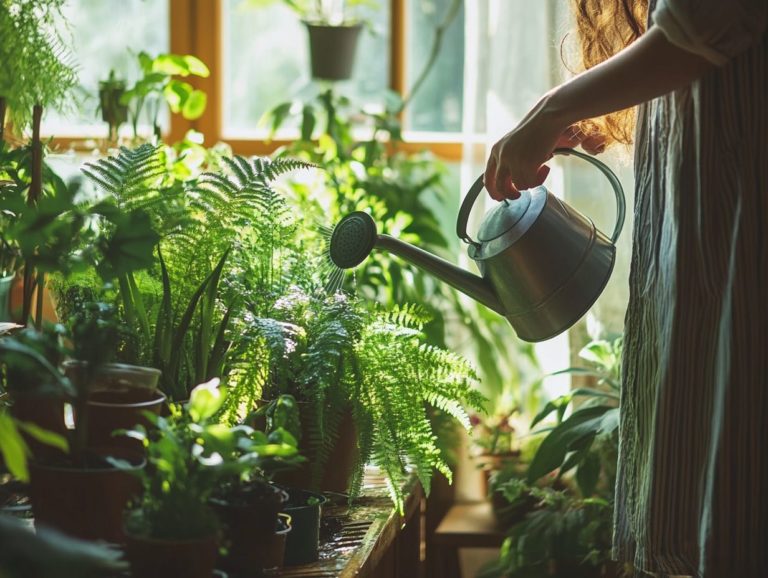Why Consistency is Key in Watering
Watering may appear to be a straightforward task, yet the effects of consistency on plant growth are truly remarkable. Just like your body flourishes with regular nourishment, your plants depend on a steady supply of water to thrive. Whether you’re caring for a houseplant or nurturing a complex indoor garden, understanding watering is key.
This discussion will delve into how consistent watering impacts plant health and the essential factors that can disrupt this vital routine. You ll discover practical watering tips for establishing a reliable watering schedule and learn about common pitfalls to steer clear of.
Engage with us to deepen your understanding of effective plant care techniques!
Contents
- Key Takeaways:
- The Importance of Consistency in Watering
- Key Factors Influencing Your Watering Routine
- How to Maintain Consistency in Watering
- Common Mistakes in Watering and How to Avoid Them
- Frequently Asked Questions
- Why is consistency important when watering plants?
- How often should I water my plants to maintain consistency in my indoor garden?
- What happens if I am not consistent with watering my plants?
- Can I use a watering schedule to maintain consistency in my gardening journey?
- Are there any tips for maintaining consistency in watering my thriving presence in the garden?
- What are some stress signs that my plants are not receiving consistent watering?
Key Takeaways:
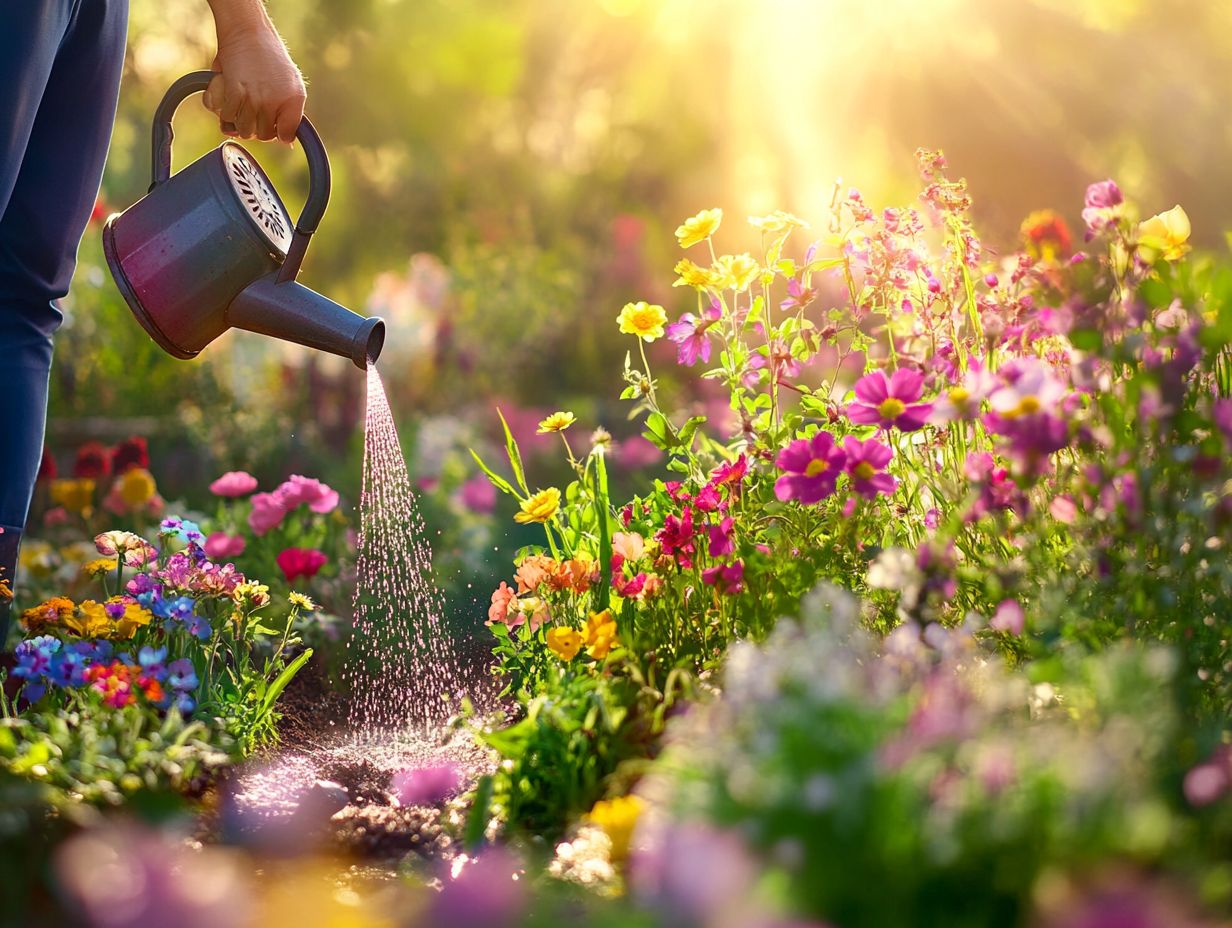
- Consistent watering is crucial for healthy plant growth and development.
- Environmental and plant-specific factors can affect the consistency of watering.
- Maintaining a watering schedule and utilizing technology/tools can help maintain consistency.
The Importance of Consistency in Watering
Consistency in watering is essential for nurturing your plants, especially in an indoor garden, where the absence of natural rain demands careful maintenance. Stick to a watering routine, and watch your plants burst with lush greenery and vibrant foliage, which enhances overall plant wellbeing.
By engaging in regular and mindful watering, you not only support their growth but also cultivate a thriving environment. This is especially important in urban settings where natural resources may be scarce, helping to create a healthy habitat for your green companions.
How Consistent Watering Affects Plant Growth
The frequency and consistency of your watering practices are vital for the growth and vitality of your plants. Any fluctuations can lead to nutrient deficiencies and visible signs of plant stress.
When you maintain soil moisture levels within an optimal range, your indoor plants will thrive, showcasing lush foliage and vigorous growth. On the flip side, inconsistent watering can disrupt the delicate balance necessary for healthy roots, often leading to wilting or yellowing leaves, which are common stress indicators that call for your attention.
Proper moisture not only enhances nutrient absorption but also cultivates a healthy ecosystem of tiny organisms in the soil that helps plants grow. By understanding this relationship, you can create a nurturing environment that fosters the development of a stunning, flourishing indoor garden.
Key Factors Influencing Your Watering Routine
Several factors shape your watering routine, including the environmental conditions at play, such as humidity levels and sunlight requirements. Each type of plant also has its own unique needs, which can vary significantly from one species to another, creating a need for tailored watering routines.
Environmental Factors

Environmental factors like humidity levels and sunlight exposure significantly influence your indoor plants’ watering needs. It’s essential to customize your watering schedule based on these conditions.
These elements are crucial for understanding how quickly soil moisture evaporates and how effectively roots can absorb water. For instance, in a dry environment with low humidity, soil can dry out quickly, necessitating more frequent watering. High humidity can keep moisture in the soil longer, potentially leading to overwatering if you re not keeping a close eye on it.
The intensity and duration of sunlight can either help plants grow or create stress, impacting their hydration needs. Understanding these factors is crucial to keeping your plants happy and healthy.
Ready to transform your indoor garden? Start your consistent watering routine today!
Plant-Specific Factors
Each plant has unique watering needs. Getting the frequency right is key to their growth and health.
Understanding how much water different species require allows you to create the best watering routine. For instance, succulents and cacti thrive on less water compared to tropical plants, which love a moist environment.
Soil type, climate, and pot size also affect how you should water. Knowing these factors helps prevent overwatering, which can lead to root rot.
How to Maintain Consistency in Watering
Stick to a watering routine for your plants’ health. A personalized schedule can help meet their specific needs.
Creating a Watering Schedule
A watering schedule is vital for your indoor plants. It ensures they get consistent nourishment and strengthens your bond with them.
Consider the different needs of your plants, the environment, and your daily routine when designing this schedule. For example, succulents need less water than tropical plants.
Take seasonal changes into account, as temperature and humidity affect watering frequency. Observing these changes will improve your plant care.
Creating a routine that fits your availability will support your plants’ health and deepen your rewarding connection with them.
Using Technology and Tools

In our tech-savvy world, using modern watering tools can enhance your plant care. These tools remove the guesswork and ensure your plants get the best care.
Smart irrigation systems, equipped with timers and sensors, automate watering schedules based on your plants’ needs. Moisture sensors can even alert you when your soil is too dry or too wet.
These technologies create a harmonious environment, leading to thriving plant life.
Common Mistakes in Watering and How to Avoid Them
As you start your gardening journey, beware of potential pitfalls. Overwatering and underwatering can hurt your indoor plants.
Overwatering and Underwatering
Both can damage plant health and show as signs of stress. Recognizing these indicators is key to maintaining healthy plants.
For instance, wilted leaves may indicate your plant needs more water, while yellowing tips could mean it’s drowning in too much moisture.
Evaluate each plant’s watering needs by considering soil type, pot size, and humidity. Adjusting your watering frequency based on these factors will promote robust growth.
Proper Techniques for Watering
Proper watering techniques can improve soil moisture retention. This helps nurture the roots of your indoor plants.
Water your plants in the early morning or late afternoon. These times reduce evaporation and improve nutrient absorption.
Invest in tools like moisture meters. They help guide your watering frequency and prevent overwatering.
Tailor your watering approach to each plant’s needs. Deep-rooted plants may need less frequent watering, while delicate ones require lighter, regular hydration.
By using these strategies, you can boost your indoor gardening game. Get ready for healthier and more vibrant plants!
Frequently Asked Questions

Why is consistency important when watering plants?
Consistency is important when watering plants because it ensures that they receive a steady supply of water, which is necessary for their growth and health.
How often should I water my plants to maintain consistency in my indoor garden?
This depends on the type of plant and its specific watering needs. Generally, it is recommended to water plants once or twice a week. Monitor the soil moisture and adjust accordingly.
What happens if I am not consistent with watering my plants?
If you are not consistent with watering, your plants may suffer from dry conditions. This can result in stunted growth, wilting, and even death. Inconsistent watering also makes plants more susceptible to diseases and pests.
Can I use a watering schedule to maintain consistency in my gardening journey?
A watering schedule can help maintain consistency. Set specific days and times for watering and stick to them.
Are there any tips for maintaining consistency in watering my thriving presence in the garden?
Use the same watering method, whether it be a watering can, hose, or drip irrigation system. Check the weather forecast and adjust your watering schedule accordingly.
What are some stress signs that my plants are not receiving consistent watering?
Signs that your plants may not be receiving consistent watering include yellowing or browning leaves, wilting, and slow growth. Address these issues as soon as possible to prevent further damage to your plants.

